Solar hot water - introduction

“The sunlight that strikes Earth’s land surface in two hours is equivalent to total human energy use in a year. Only a small portion of that enormous daily, renewable flux of energy will ever be needed by humanity.” – Christopher Flavin
Contents
What is solar hot water?
Also known as solar thermal, a domestic solar hot water system is one that absorbs the sun’s energy and transfers it to the water in a well-insulated storage cylinder, so that you have hot water when you need it. Solar thermal is different from solar photovoltaics, as solar hot water panels (usually called ‘collectors’) don’t produce electricity – they have water flowing through them, which they heat directly.
In temperate regions, it won’t be the sole provider of hot water; it will complement a conventional system using gas, oil, electricity or solid fuel – but it will pre-heat water so that bills are drastically reduced. During summer months the system can provide all your hot water, and it should provide more than half the annual hot water needs for an average household.

Collectors are usually installed on a sloping roof, but can also be installed on a flat roof, or even on the ground.
The two main types of collectors are flat-plate and evacuated tube. Flat-plate collectors heat the water directly; evacuated tubes contain a fluid that evaporates at low temperatures, and the resulting gas rises and condenses on a manifold, transferring its heat as it does so.
Insulated pipes deliver the heated water from the collectors to a hot water cylinder.
There are two kinds of system – direct and indirect. In a direct system, the water that passes through the panels is the water that eventually comes out of the hot tap. In this type of system, there are issues around the water in the panels freezing in winter (so they need to be drained) and lime-scale build-up.
Plumber demonstrates they mysteries of heat transfer coils in hot water cylinders by cutting away the side of the cylinder. Coils can transfer heat to or from the cylinder. So for example, hot water from solar panels can transfer heat to the cylinder via a coil; but also, hot water in the cylinder can transfer heat to water in a coil for the central heating. A cylinder can have one, two or more coils.
In an indirect system, the liquid in the panels doesn’t come out of the tap – it transfers its heat to the water in the cyclinder via a heat exchanger (a coil of pipe in the cylinder) and then returns to the panels in a continuous loop, to be re-heated. In this kind of system, the heat transfer liquid can contain anti-freeze, and there’s no problem with lime-scale build-up. Almost all solar hot water systems are indirect.
Panels can either transfer heat to a separate pre-heat cylinder, or heat a twin-coil cylinder via the bottom coil (see image and video). There will be another coil in the cylinder that usually goes to a conventional boiler, but could be used with a wood stove (see below).
History: in the 1880s a French engineer, Charles Tellier, built flat-plate collectors to heat water that produced stream to run a mechanical water pump. He went on to use the collectors to heat water for his home. Unfortunately, fossil fuels then took over for most water heating – but renewables are on the rise again nowadays.

What are the benefits of solar hot water?
Solar thermal, and other renewable energy sources, doesn’t involve the burning of fossil fuels, which releases nitric oxides, nitrogen dioxide and sulphur dioxide into the atmosphere. This causes acid rain which damages forests, wildlife and human health, and acidifies the oceans; it also releases carbon monoxide, nitrous oxides, lead, particulates and hydrocarbons, which pollute the atmosphere, and cause damage to plants, ecosystems, and human respiratory health.
The burning of fossil fuels adds over 40 billion tonnes of carbon dioxide into the atmosphere each year, and rising. CO2 is an important greenhouse gas. In pre-industrial times there were 290ppm (parts per million) of CO2 in the atmosphere; it’s now well over 400ppm. The last time there was such a concentration of carbon in the atmosphere was 3 million years ago.

The increase in greenhouse gases in the atmosphere is raising the earth’s temperature, which will accelerate biodiversity loss, and for humans will mean desertification, famine, forest fires, increase in tropical diseases, and flooding due to the melting of polar ice.
In short, burning fossil fuels is a really bad idea, and we should relegate it to history as soon as possible.
Solar thermal reduces your energy bills, and is possibly the most cost-effective renewable energy technology that you can install in a domestic situation, with the shortest payback time. A DTI investigation into solar hot water systems in the UK from 1970-2000 found that a typical system will provide 72% of a household’s hot water over the course of a year (c. 15% in winter and 100% in summer). This is assuming that the roof is south-facing – although if it faces south-east or south-west there will only be a 5% loss of efficiency.
A look at a solar thermal (evacuated tube) self-installation, with a wood-burner with back boiler connected as well (n.b. you can use a cheap plunger-type filling bottle to pump your heat-transfer liquid into the loop of pipe from the panels to the cylinder).
What can I do?
Make sure your home is well-insulated, in good repair and dry before thinking about renewable energy systems. First, learn as much as you can. Here’s a free pdf of our book, Solar Hot Water: Choosing, Fitting and Using a System. This was published in 2012, and so some parts will be out of date – but it still contains a lot of useful info.
A solar hot water system is for delivering hot water to your taps, shower and washing machine / dishwasher. It could be used for supporting space heating, but those types of systems are significantly more expensive and make specific requirements of your house – for example, it needs to be super-insulated and you need more panels.

Make sure your roof is facing the right way (see ‘benefits’, above), and that either your cylinder has an additional coil to add solar, or that an extra coil can be fitted – but often, you’ll need to make sure you have the space to install a larger, twin-coil cylinder. If you can manage to position your collectors below your cylinder, then because hot liquid rises, you won’t even need a pump to deliver the transfer fluid from your panels to your cylinder.
You can buy a system installed, self-build and install, or self-build and then have your system installed by a professional. You have to know what you’re doing if you intend to self-install. You absolutely need plumbing experience, and to understand that although it may look like conventional plumbing, solar thermal installation has some unique characteristics that are more demanding and potentially more dangerous.

There are often government incentives to install renewables. Search online for grants, or see the Energy Saving Trust website for the latest news.
You probably won’t need planning permission, unless you live in a listed building or a conservation area. Check with your local planners, or your installer can help.
Decide whether you want evacuated tubes or flat-plate collectors. Installed prices for both are typically in the £3-5000 range. If you choose flat-plate, the collectors will have a ‘selective surface’ – a special coating that maximizes the absorption of solar radiation and minimizes re-emission; in temperate climates, selective surface flat-plate collectors are only slightly less efficient than evacuated tubes. But tubes are a bit more efficient, so you’ll need a smaller area for the same energy output – which may be important if you don’t have much roof space. Flat-plate systems historically have been more reliable over longer periods of time – there’s less to go wrong, and they tend to operate at lower temperatures.
Ingenious and cheap home-made solar swimming pool heater.
Solar hot water works well in combination with a wood stove with a back boiler. This way the solar panels will provide all your hot water in the summer, and the wood stove all your hot water in the winter. Then you’ll have year-round hot water from renewables. This will involve installing a triple-coil cylinder (or having another coil installed in your twin-coil cylinder) if you intend to keep your existing boiler, or a twin-coil cylinder if you don’t. More information about this can be found in our Heating with Wood book.
Modern systems are automated. You don’t have to decide when to switch them on and off – it does it for you. You don’t have to re-set any clocks after power cuts; and you don’t have to change how and when you use hot water (although if you do, you may get more benefits from your system – for example, if you change from having a shower in the morning to the evening).
There are (cheaper) special systems for swimming pools, consisting of a large area of black tubing.

NB: if you’re thinking of getting solar hot water at some point in the future, then maybe think twice about installing a combination (combi) boiler. It’s not impossible, but it’s very difficult and expensive to combine solar hot water with a combi. Condensing boilers are fine.
Your installer will leave you with a little checklist to go through every couple of months, just to make sure everything is working properly (if you install yourself, you’ll know what these are). It might be a good idea to have a full maintenance check every 5 years or so.
See here for more detailed info on getting and using a solar hot water system.

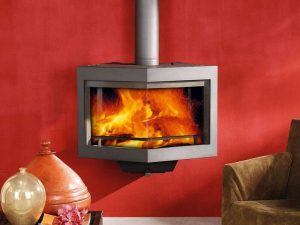
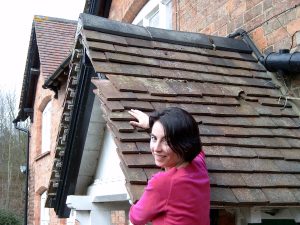
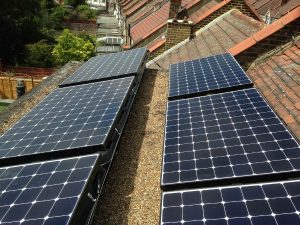
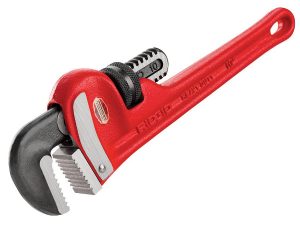
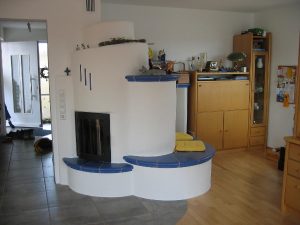
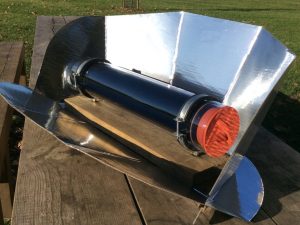
27 Comments
A key thing with solar hot water is the setting of the timer, if a boiler is allowed to be switched on by its thermostat in the water tank (for example after water has been drawn for showers first thing in the morning) the water in in tank will already be hot when the sun hits the panels and the solar pump won’t start.Our boiler has an additional timer for hot water only ,that only allows it to heat water for an hour in the evening, thus giving the solar maximum chance to work.Using a combined heating and water programmer is less fool proof as people tend to fiddle with them and allow the boiler to heat the water on demand thereby stopping the solar side of the system from working to maximum efficiency. If extra hot water is needed (for example you have guests staying and need extra hot water its a simple matter to press the override button on the additional timer to allow the boiler to take over from the solar.
I think that’s a really important point – maybe the most important point when it comes to solar hot water. You only want the boiler to come on in the evenings, so that the sun can have a good go at heating your water, without having to compete with the boiler. Otherwise you’re wasting all that solar energy and paying for gas that you don’t need.
I’m looking to heat and supply hot water to some out buildings. I have used solar tubes before so will make use of these but am looking for a system that also incorporates the heating of the buildings, any ideas ?
That’s a big topic. Correct sizing will be important, particularly of the heat store. Underfloor heating might be an option as the water doesn’t need to be so hot. The buildings should be well insulated to minimise demand. You’ll ant to consider multiple inputs to the heat store beside solar, e.g. biomass. Is it on a farm? If so, consider a mini AD system using those balloons to collect the gas and feeding it direct to an adapted boiler.
Hi How do I link a hot water cylinder to a combi system ?
Combi boilers yield heat on demand. They take a cold feed and apply heat, usually gas-fired. Combi boilers are designed to produce heat at a fixed temperature dependent on the water flow and demand. Far as I’ve ever seen, it is not controlled by a thermostat, so if the cold feed were to be replaced by pre-heated water from a heat store this could seriously upset the calibration and produce water that’s far too hot. So it’s very difficult; this is why solar water heating systems don’t usually include a combi boiler. It’s not impossible, but it does depend on your make of boiler and knowing a suitably qualified heating engineer prepared to customise the boiler – which could invalidate any guarantee. This page tells you how: http://www.yougen.co.uk/blog-entry/2522/How+to+benefit+from+solar+hot+water+with+a+combi+boiler/
Hello, My Lili Solar hot water system has given trouble free service for many years 🙂 However today there is an error message “Delta T > 50K” . I think this means that the panels are more than 50 degrees hotter than the tank, which is about right because the whole tank is 66C and the panels are 117C. I’m worried that the panels might be damaged by getting too hot, but the pump won’t run to cool them because the tank is at the max temp. I don’t want the tank to get any hotter due to danger of scalding when using the water. We didn’t have a problem last summer but I think we were using more hot water. Any thoughts or suggestions would be greatly appreciated. Thanks
Check the thermostat. Is it functioning correctly? Is the pump ok? If yes to both, either use more hot water or install a larger, or second, tank. You’re lucky to have so much free heat! Presumably you claim RHI?
Pump and thermostat working fine. Second tank is an interesting idea, or maybe a large jacuzzi….
I’m not claiming RHI, From Ofgem “If you’ve already installed a renewable heating system, you have up to 12 months to apply to the scheme from its commissioning date. That’s the date your installer tests and signs off the system….” As mine is a Lili self build system installed in 2002, I’ve missed the date and I don’t have a certified installer. Unless there is a work around ?
No workaround! Jacuzzi… (uses energy) … swimming pool 🙂 … radiators in greenhouse and grow pineapples!
I have a evacuated tube collector which I plan to connect to a 40lrt hot water tank on my boat that also runs off electricity and the engine when running. Ive been told the collector is overkill for a 40 lrt tank so I’m planning to install 2 hot water radiators in the boat and when the tank is up to temp auto switch to the radiators. Is this do able ?
So the engine runs a dynamo that runs an immersion heater? The sensor-thermostats on the tank should prioritise the tube connection. If the tank is hot the dynamo is not needed. If not hot enough the dynamo feeds the tank. If the tank is hot because of the tubes alone and there is still surplus heat, it can be directed to the radiator. But why would you need it if it so hot outside? You need to be careful the system does not overheat. As the boat constantly changes direction, the fins can’t point at the sun. Better to use wind power I’d have thought, as this can be turned off when not needed. Tubes can’t be turned off (unless you cover them).
Having a dynamo and immersion heater is daft. All the hot water and heating you want from a heat exchanger on the exhaust system. You don’t need the tube collector unless you hardly ever use the engine.
Gavin Fredericks – Your engine (diesel is about 32% efficient) for a narrow boat – say 30 bhp = 22kW and they dump about 65% of the heat = 14 kW when running at full load. Engines are very rarely used at full load but you get the idea.
If you are using the boat’s engine on a regular basis then you could circulate the cooling water through radiators ?
Gavin Fredericks – I think the electric heat was possibly misunderstood, assuming your hot water has a shore hook up as is usual to an immersion heater at 240V. Your dear old deisel, when on the move would be using it’s waste heat for your hot water, which is fine. The solar water is great but the catch to my mind is that excess heat sent to your radiators would generally happen in the summer.
Yes I think my question was misunderstood so I’ll try again.
My boat has a 40 lrt hot water heater which can be run off 240v shore power or 240v via an onboard generator or if necessary a 4.5kw inverter (not something I wish to do) and the engine when underway.
I have fitted a solar hot water panel which I have been lead to believe is suitable for a 300lrt hot water tank.
My intention is to connect it to heat the hot water cylinder and when the hot water tank reaches the required temperature auto switch over to radiators to heat the boat.
I realise this will work best during summer so I plan to cover the panel as required to minimise heating up the boat during summer.
What I’m looking for is someone who can advise what devises are required to operate the switching from hot water tank to radiator heating and back as required. I’m assuming I will need temp sensors and shut off valves etc but have no experience in this area.
Any help would be much appreciated as it appears to be something that anyone I have spoken to seems unable to get their heads around and provide sound advise.
Thanks in advance
Gavin Fredericks
Please clarify “radiator heating”. The radiators will be fed from the tank whether the tank is heated by solar or diesel, no?
The hot water from the solar tubes to the radiators would switch over once the hot water tank had reached the desired temperature and continue until the water from the solar tubes dropped to a certain temperature or the hot water tank required re heating.
This system would also work from the engine when underway.
From the way you’re describing it sounds as though your solar loop is going directly to the radiators and not to the tank. The above diagram gives a clue as to how it should be. The diesel generator has its own immersion coil in the tank. I need to post a diagram for you but there is no facility to do this here. Can you send me your email address and I will do it.
Thank you for offering to answer query I have a black panel collector with pressurised transfer system pumped via a gravity fed cylinder I am losing pressure gradually over a period of weeks so I want to confirm that all is well by doing a full recommissioning and then keep it under close observation.
As well as the collectors and cylinder there is an expansion vessel, air release unit and the pump controlled by a differential thermostat system.
My queries are, is the expansion vessel likely to fail and allow the pressure to drop,,is the cylinder heat transter unit robust as the system is now 15+ years old and lime scale build up is significant in this area, and / or is the air separator needing attention, it is purg-o-matic 150 if you have heard of it and the pump and control is a Resol deltaSol unit.. Perhaps my most important question is the anti-freeze to water ratio in the system. I have purchased the anti-freeze and admittedly the instructions are for car use but it says that for winter use only the fluid supplied. Is that appropriate for this system as I was supplied with anti-freeze when installed and mixed it with water to what ratio I do not remember but am concerned putting only anti-freeze in the system.
Thank you for any advice Peter
This is way too specific and specialised for me to offer a certain answer. If it is 15 years old this could be any of the things you mention. Pressure if you remember Boyles law is a function of the temperature and volume so if volume is increasing the pressure will fall. Do you have a leak? Does it vary according to outside temperature? In the winter as it is cooler the pressure may be less. I can only suggest that as it is so old you replace one item at a time to renovate the system until the problem is solved. Hope this helps.
Wondering if I can put a solar collector INSIDE a south-facing porch?
Would it work if totally vertical, flush to a wall?
How hot does the outside of a collector get?
Would shadows from window bars make it too inefficient?
I would like some advise on solar hot water does lili sell any systems. If not could you supply me with any suppliers ?
Warren – advice – see above, plus our book (see books page under resources).
Suppiers – see products & services under resources, plus online search for local suppliers.
Please could someone advise me where to purchase a solar hot water kit that I could fit myself.
When installing a solar thermal tube system, why wouldn’t you use small bore pipes (8-10mm) between hot water tank & collectors?
I appreciate your clear explanations and the emphasis on safety throughout the process.
It’s evident that you care about your readers’ well-being and want us to tackle these issues safely and effectively.
Your blog has become my go-to resource for appliance-related issues,
and I’ll be sure to share it with friends and family who might face similar problems with their appliances.
Keep up the fantastic work!
<a href=”https://lildutchuncle.com//”>lildutchuncl</a>